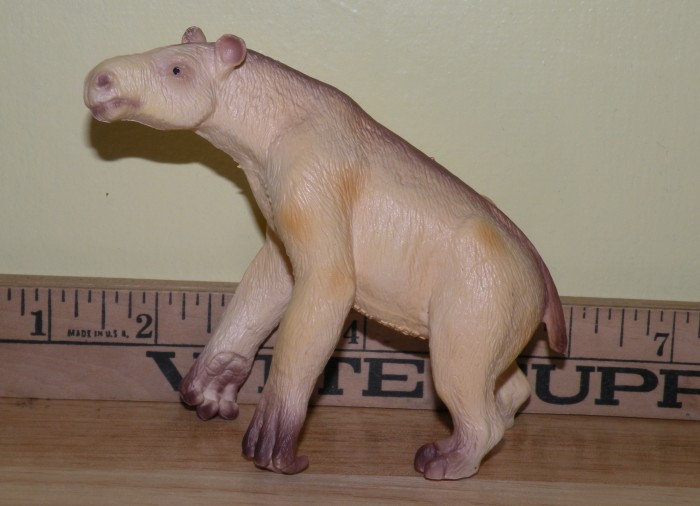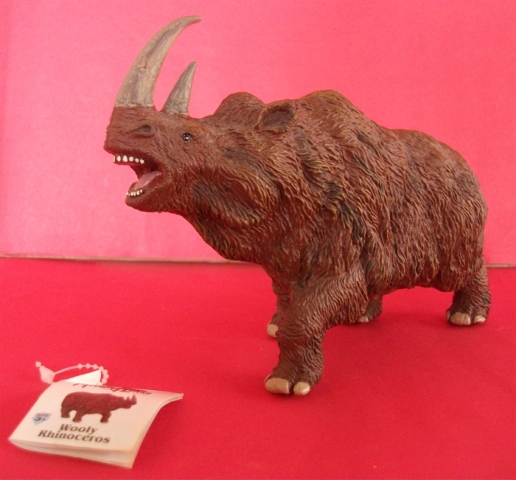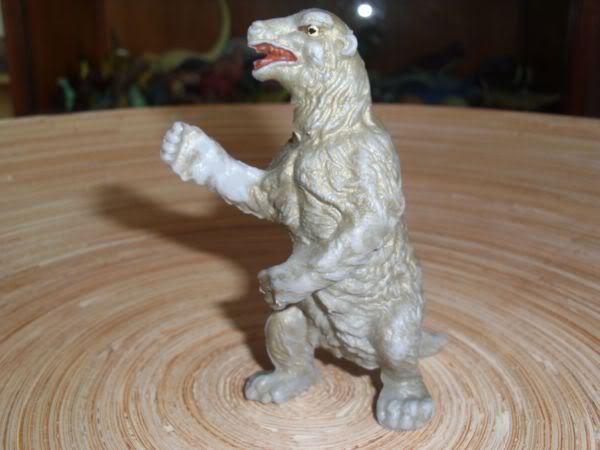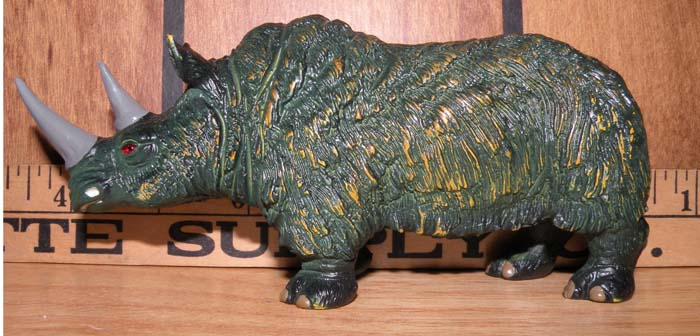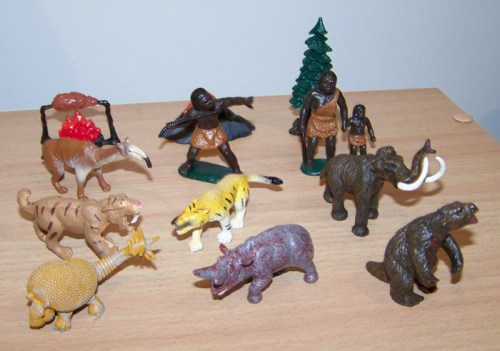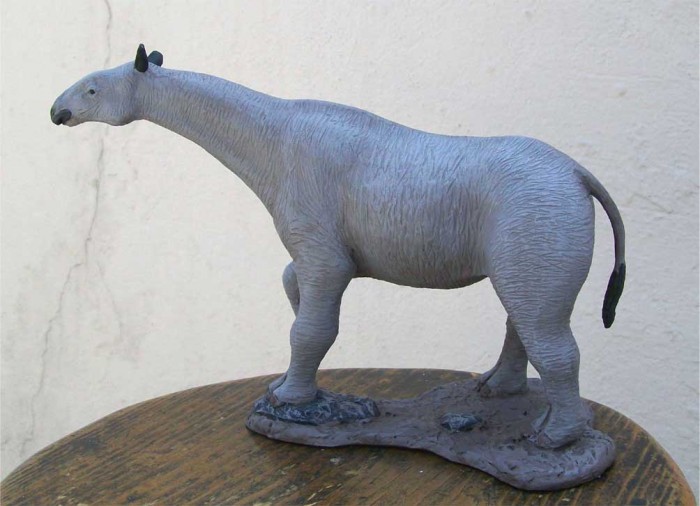Review and photos by Nathan Morris (AKA ‘Takama’), edited by Plesiosauria.
Megacerops was a large odd-toed ungulate that lived during the Late Eocene in North America. It is most commonly referred to by the synonymous name Brontotherium. Brontotherium means ‘thunder beast’, and its origins come from an old American legend that suggest that these beasts ran across the clouds, while causing thunder to roar with their footsteps.
Classification: Mammal
Review: Chalicotherium (Bullyland)
Review: Woolly Rhino (Safari Missing Links)
Review: Deinotherium (Bullyland)
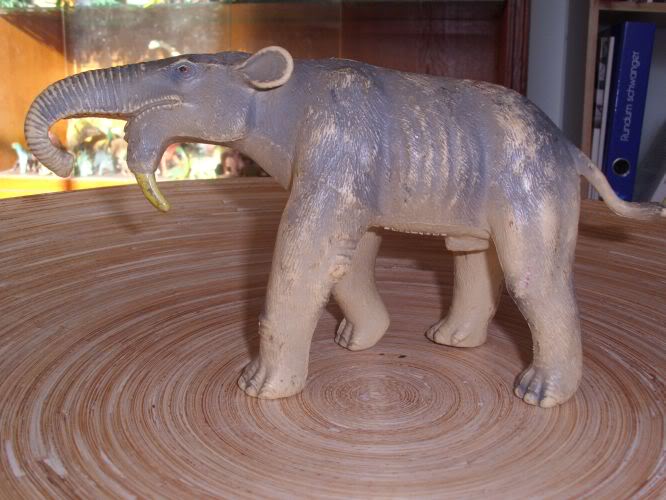
4.4 (5 votes)
I guess it is time for a review of Bullyland Deinotherium.
It is a highly sought after figure, not yet a myth, but quite close. This is due to the relatively little number of Deinotheriums that have been produced and delivered.
Deinotherium (“terrible beast”) was a large prehistoric relative of modern-day elephants that appeared in the Middle Miocene and continued until the Early Pleistocene.
It is a highly sought after figure, not yet a myth, but quite close. This is due to the relatively little number of Deinotheriums that have been produced and delivered.
Deinotherium (“terrible beast”) was a large prehistoric relative of modern-day elephants that appeared in the Middle Miocene and continued until the Early Pleistocene.
Review: Megatherium (Marolin / VEB Plaho)
Review: Andrewsarchus (Bullyland)
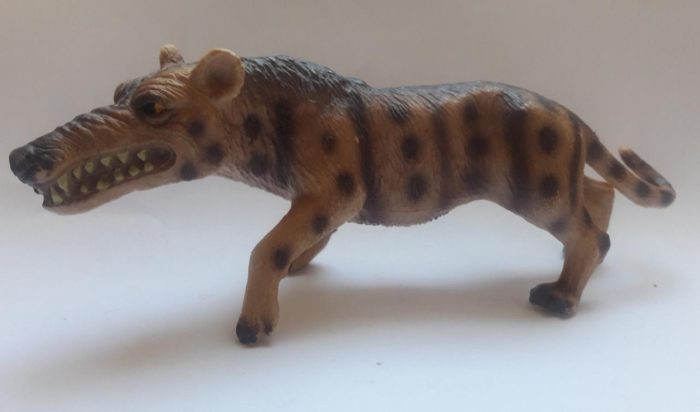
2.9 (12 votes)
Edited by Dinotoyblog
Andrewsarchus is interesting in terms of its discovery, its size, its habits and its look. It is a large basal mesonychid from the Eocene Epoch that is rarely depicted by toy lines. Safari and Bullyland are the only companies that released it as a commonly available toy figure.
Andrewsarchus is interesting in terms of its discovery, its size, its habits and its look. It is a large basal mesonychid from the Eocene Epoch that is rarely depicted by toy lines. Safari and Bullyland are the only companies that released it as a commonly available toy figure.
Review: Hyaenodon (AAA)
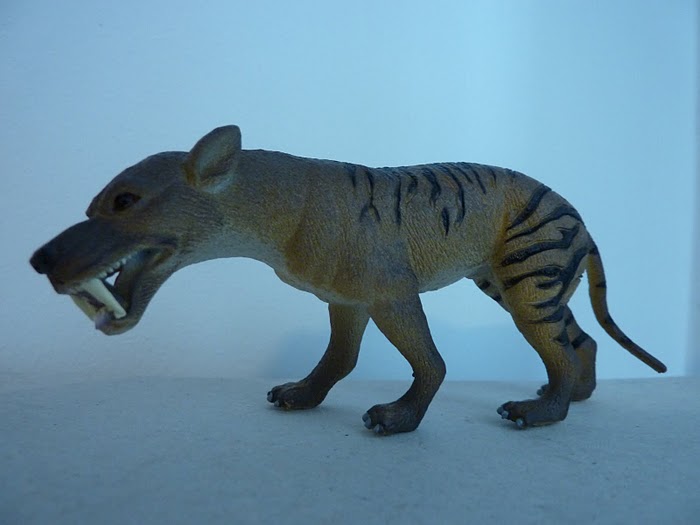
3.5 (8 votes)
Review and photos by Mihnea (Wildheart)
Existing for approximately 26 million years, Hyaenodonts were some of the largest predators of the Late Eocene and Early Miocene epochs. Their name comes from the sharp hyena-like teeth used to tear apart possible prey. The skulls of these animals were huge and well equipped for hunting, but their brains were quite small, something typical in primitive carnivorous mammals.
Existing for approximately 26 million years, Hyaenodonts were some of the largest predators of the Late Eocene and Early Miocene epochs. Their name comes from the sharp hyena-like teeth used to tear apart possible prey. The skulls of these animals were huge and well equipped for hunting, but their brains were quite small, something typical in primitive carnivorous mammals.
Review: Woolly rhinoceros (AAA)
Review: Entelodont (AAA)
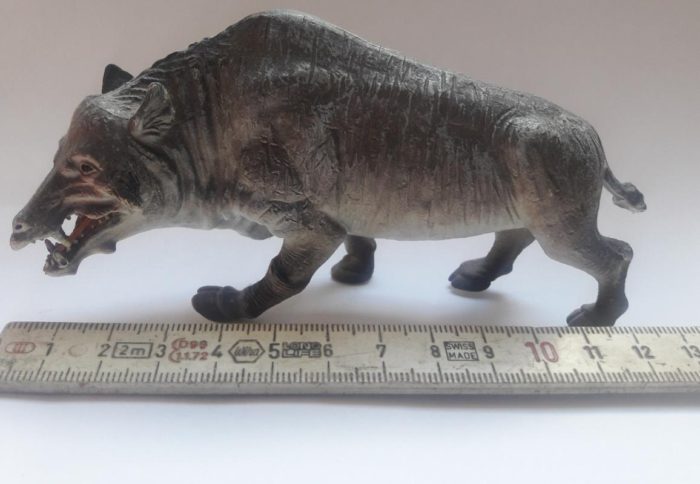
4 (9 votes)
Admittedly, there were lovelier animals to have walked the earth in prehistoric times than entelodonts, omnivorous beasts that were two metres tall and four metres long. Entelodonts were especially abundant in what are now Mongolia, China and Northern America and strolled through the landscape searching for any kind of food in the Eocene epoch – mainly probably carrion.
Review: Macrauchenia (Prehistoric Mammal Series by Schleich)
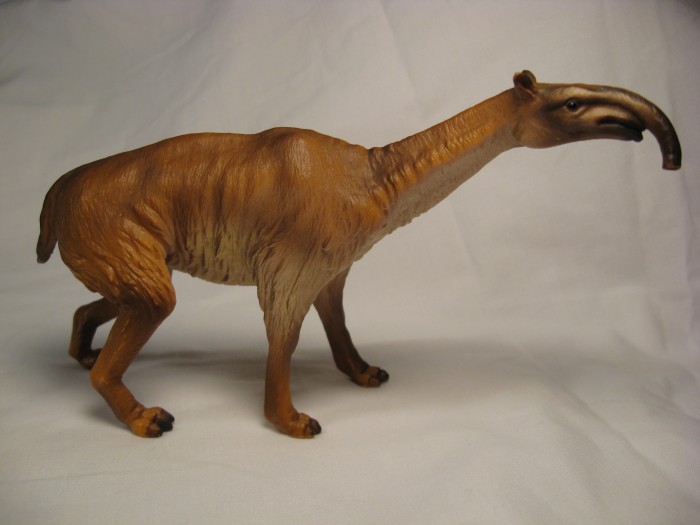
4.9 (12 votes)
The peculiar looking ungulate Macrauchenia (“large neck”) inhabited South America for roughly 7 million years, from the Miocene to the Late Pleistocene, only becoming extinct around 20,000 years ago. This herbivorous animal resembled a camelid superficially, when in reality it was a member of an extinct order called Litopterna.





